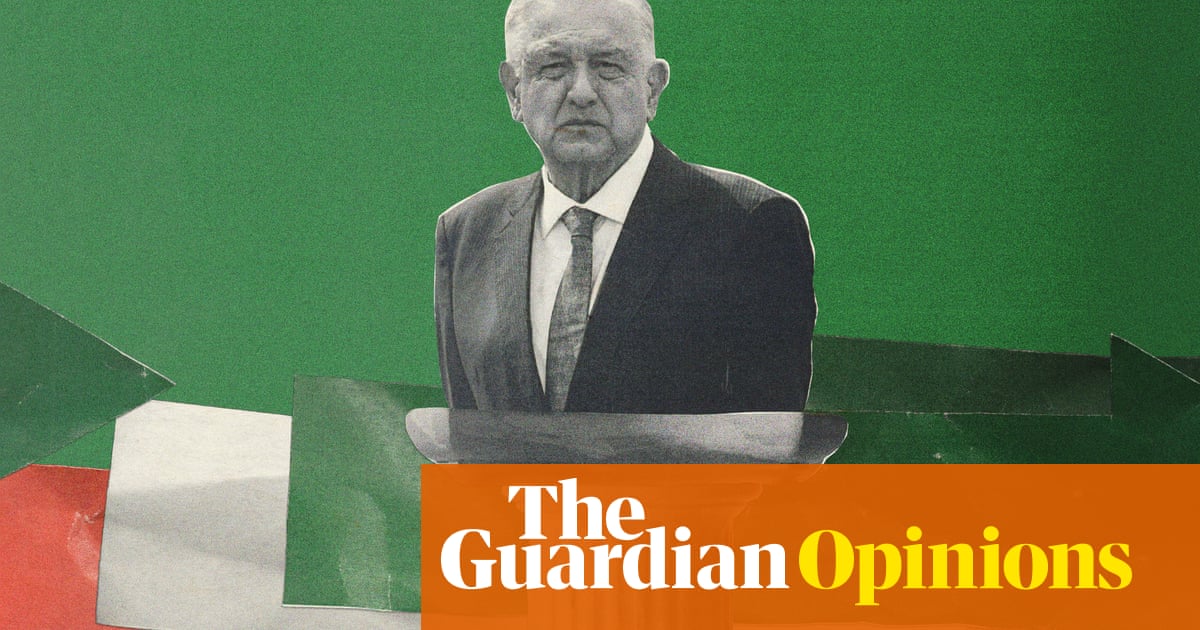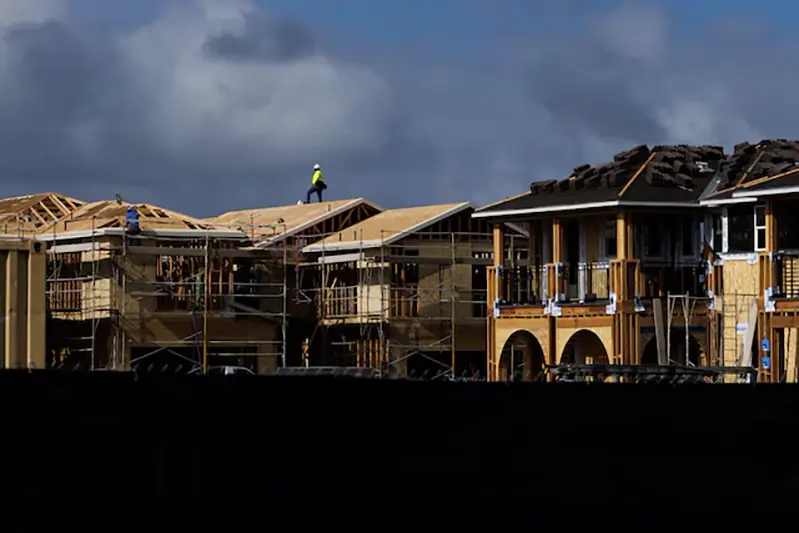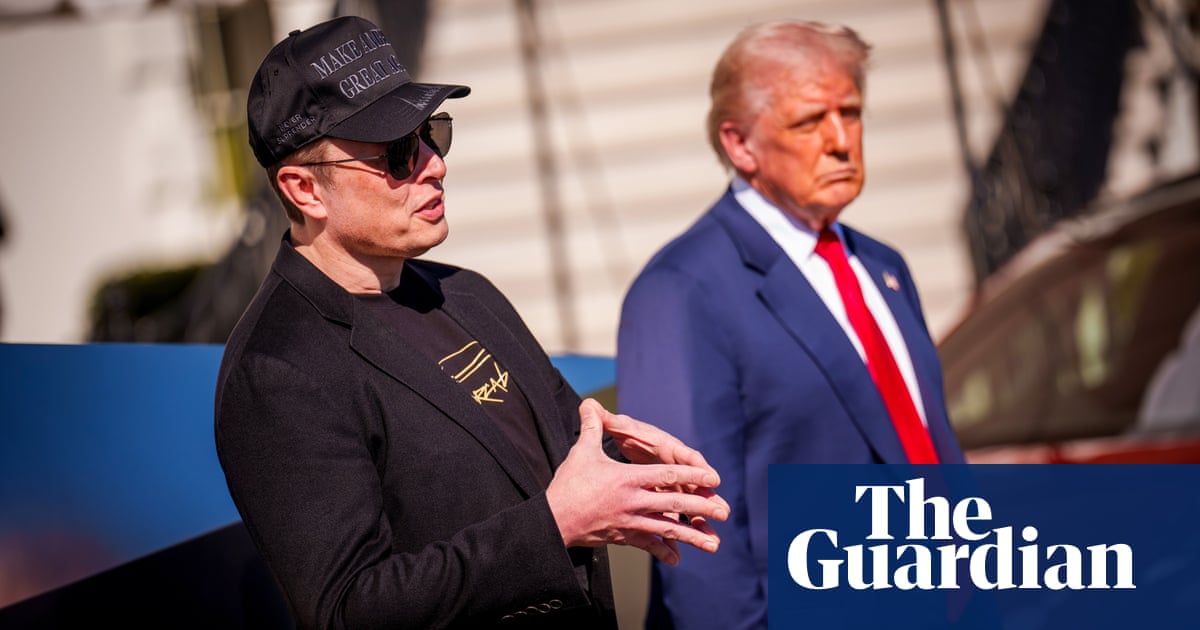Donald Trump’s climbdown on Wednesday from the most draconian aspects of his tariff regime has uncovered a damning picture of chaos at the heart of his presidency without necessarily alleviating their most painful effects.
The president’s landmark “liberation day” unveiling of tariffs in the White House Rose Garden on 2 April was supposed to be symbolic gateway to his promised “golden age of American greatness”; instead, it triggered a cascade of global market crashes that prompted warnings of a recession, or even a 1930s-style depression, while Trump brushed it all off as temporary “disruption”.
Time alone will tell how much damage has been inflicted on the credibility of Trump’s economic policy and indeed his entire administration by the ditching of nearly 80 years of US economic and free trading architecture, only to be followed by a sharp, if partial, U-turn.
The president’s sudden and unheralded retreat from a signature policy that he has advocated for more than four decades has placated Wall Street and international bond markets, which rallied at the news of his 90-day pause on tariffs that rose to above 50% on the goods from some countries deemed to have been “ripping off” the US in their trade practices.
But left untouched was a 10% across-the-board duty levied on all foreign imports – not to mention a further tariff hike on all goods from China – meaning that higher consumer prices are on the way for Americans, no matter how relieved the masters of the universe on Wall Street and other international trading centers are feeling.
“Most Americans care less about the spin and more about the fact that his 10% across-the-board tariff will still cost families an average of $2,600 more annually,” Matt McDermott, a Democratic pollster, posted on Bluesky.
The market mayhem unleashed by Trump’s “liberation day” tariff rollout is reminiscent of the reaction to the attempt by the British prime minister, Liz Truss, to stage a radical reordering of UK economic policy in 2022.
The constitutional niceties of the America’s political system will no doubt save the president from the fate of the hapless Truss, who was memorably outlasted by a head of lettuce and driven from Downing Street within 50 days of taking office as international markets rejected her policies as non-credible.
No such mechanism exists for removing a US president whose policies trigger market turmoil at home and abroad.
Perhaps buoyed up by that knowledge, Trump’s closest aides and acolytes tried to present his political backflip as a sign of strategic genius that had always been part of a brilliant plan.
“This was his strategy all along. President Trump created maximum negotiating leverage for himself,” said Scott Bessent, the US treasury secretary, who had been locked in urgent discussions with the president onboard Air Force One on Sunday about the effect of last week’s “liberation day” tariffs, according to the New York Times.
“Many of you in the media clearly missed The Art of the Deal. You clearly failed to see what President Trump is doing here,” explained the White House press secretary, Karoline Leavitt, who a day before had said that Trump was not considering a delay to putting the tariffs into effect.
Yet the depiction of a carefully plotted strategy going perfectly to plan was undermined by Trump himself, who gave a strikingly blunt explanation for his volte-face.
after newsletter promotion
“Well, I thought that people were jumping a little bit out of line,” he said. “They were getting a little bit yippy, a little bit afraid.”
It seemed a graphic portrayal of a loss of nerve – all the more so given that Trump had told Republicans that “I know what the hell I’m doing” and urged his followers to ignore the plunging markets and “BE COOL” on a post on his Truth Social network just hours earlier. “Everything is going to work out well,” he insisted.
That remains to be seen.
So too does the strength of Trump’s determination to plough ahead with a tariff policy which, even in its diluted iteration following Wednesday’s announcement, threatens to lumber Americans with higher living costs – an outcome at odds with the president’s campaign promise to reduce prices “on day one”.
Writing in the Washington Post, Aaron Blake noted that Wednesday’s decision was Trump’s second tariff climbdown since taking office without gaining anything in return, having previously backed away from duties on Mexico and Canada with only minor concessions.
Rather than being strategic, as Bessent, Leavitt and others claimed, he wrote, there was “reason to believe that this is indeed another example of Trump caving. And a big one at that.”
Trump has marketed his leadership on a message of strength, which has communicated itself to congressional Republicans, who – with a few notable exceptions – have fallen publicly into line with his tariff policies, whatever their qualms.
But having seen the president apparently buckle to market pressure, the question now arises over whether more of them will find the courage to push back. It is a question that could acquire added urgency as next year’s midterms loom into view, presenting an opportunity for voters to punish the GOP at the ballot box if inflation surges.

 German (DE)
German (DE)  English (US)
English (US)  Spanish (ES)
Spanish (ES)  French (FR)
French (FR)  Hindi (IN)
Hindi (IN)  Italian (IT)
Italian (IT)  Russian (RU)
Russian (RU)  1 week ago
1 week ago
























Comments